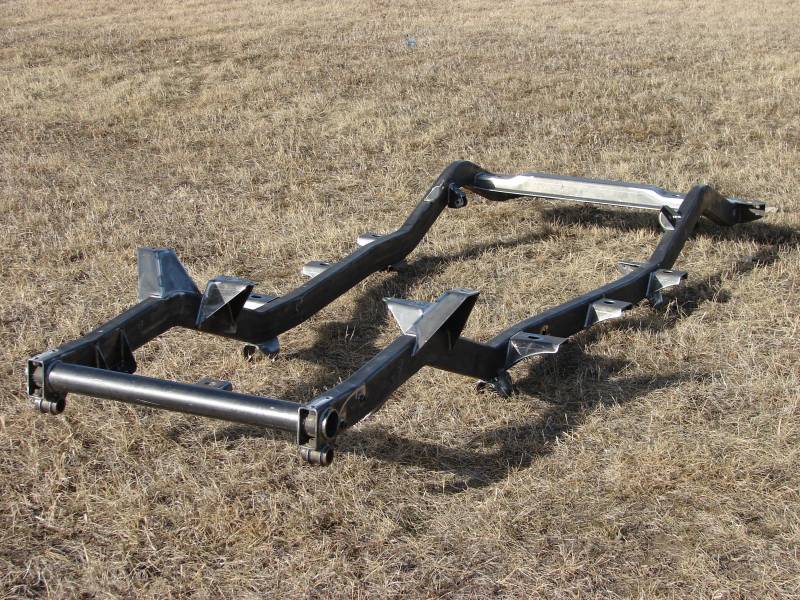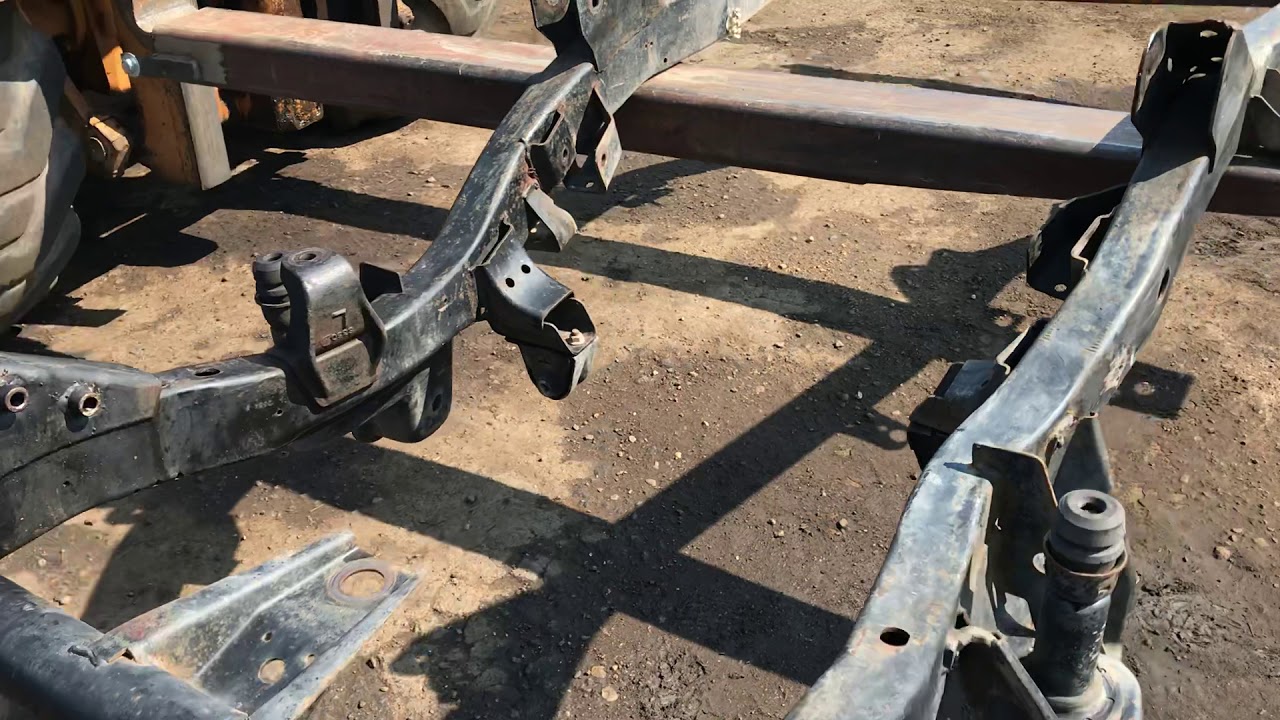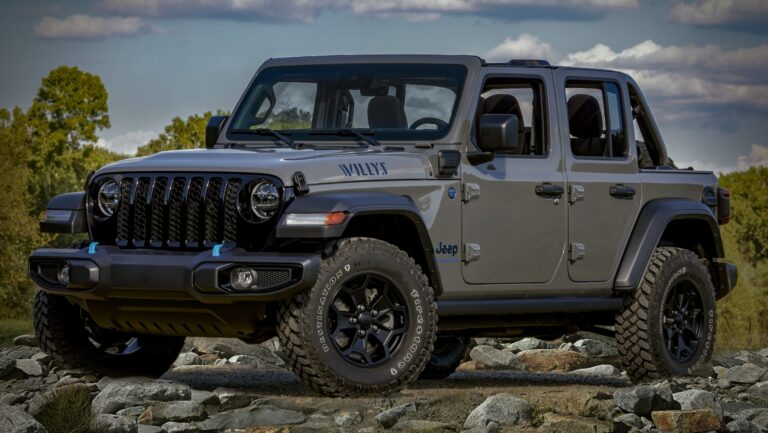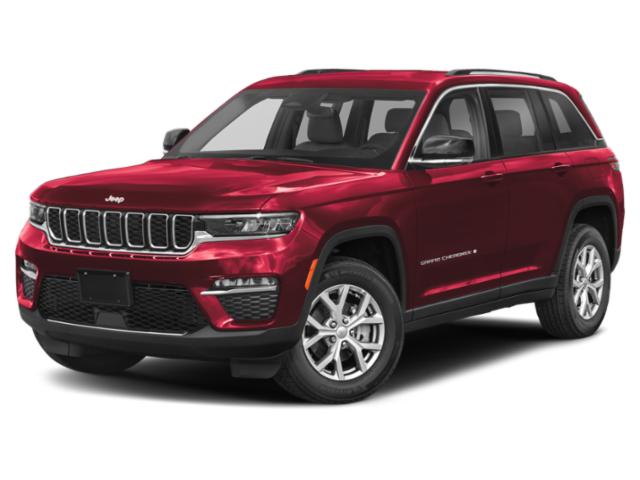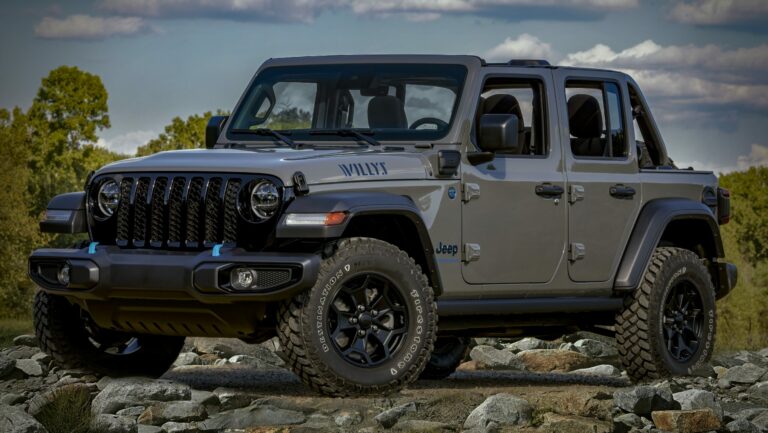Jeep Wrangler Frame For Sale: Your Ultimate Guide to Restoration, Customization, and Rebuilding
Jeep Wrangler Frame For Sale: Your Ultimate Guide to Restoration, Customization, and Rebuilding jeeps.truckstrend.com
The Jeep Wrangler is more than just a vehicle; it’s an icon, a symbol of adventure, and a canvas for customization. At the core of every Wrangler’s legendary capability and rugged charm lies its robust ladder frame. This foundational component dictates everything from structural integrity and ride quality to off-road performance. While most enthusiasts think of engines, axles, or lift kits, sometimes the frame itself becomes the focus – whether due to severe rust, accident damage, or the ambitious vision of a custom build. This comprehensive guide delves into the world of "Jeep Wrangler Frame For Sale," offering invaluable insights for anyone considering this crucial purchase.
Why Consider a Standalone Jeep Wrangler Frame?
Jeep Wrangler Frame For Sale: Your Ultimate Guide to Restoration, Customization, and Rebuilding
The idea of buying just a vehicle frame might seem unusual to some, but for Jeep Wrangler owners and enthusiasts, it’s a strategic move that opens up a world of possibilities. Here’s why someone would seek out a standalone frame:
- Rust and Corrosion: This is arguably the most common reason. Older Wrangler models, particularly those exposed to harsh climates (road salt, humidity), are highly susceptible to frame rust. While surface rust can be treated, severe structural rust can compromise safety and integrity, making frame replacement a necessity.
- Accident Damage: A significant impact can bend, twist, or crack a frame beyond repair. Even if the body panels are salvageable, a compromised frame means the vehicle is no longer safe or capable.
- Restoration Projects: For classic Jeep YJ or TJ owners looking to bring their beloved rigs back to showroom condition, a clean, straight frame is the ideal starting point. It allows for a complete, ground-up restoration without the hidden issues of an old, corroded foundation.
- Custom Builds and Swaps: Enthusiasts often seek frames for highly specialized projects. This could involve stretching a frame for a custom long-wheelbase build (like turning a TJ into an LJ), preparing for a high-horsepower engine swap (e.g., V8 conversions), or building a dedicated rock crawler from scratch.
- Salvage Title Vehicles: If a Wrangler has a salvage title due to severe body damage but an intact frame, or vice-versa, sourcing a clean frame can be a cost-effective way to bring it back to life.

In essence, purchasing a standalone frame is about laying a new, strong foundation, ensuring the longevity, safety, and performance of your Jeep Wrangler, or enabling a dream build from the ground up.
Types of Jeep Wrangler Frames Available
Understanding the different types of frames on the market is crucial for making an informed decision. Frames are typically categorized by the Wrangler generation they belong to and their condition/origin.
By Wrangler Generation:
- YJ Frames (1987-1995): Characterized by their leaf spring suspension, YJ frames are robust but often the oldest and most susceptible to rust.
- TJ Frames (1997-2006): Known for their coil spring suspension, TJs offer a more refined ride. The LJ (2004-2006) is a stretched version of the TJ, utilizing a longer frame, which is highly sought after for its increased cargo space and improved stability.
- JK Frames (2007-2018): These frames are significantly larger and more complex than their predecessors, designed to accommodate a wider, heavier vehicle with more advanced safety features.
- JL Frames (2018-Present): The latest generation, JL frames are engineered for modern performance, safety, and technology, often incorporating high-strength steel and advanced manufacturing techniques.

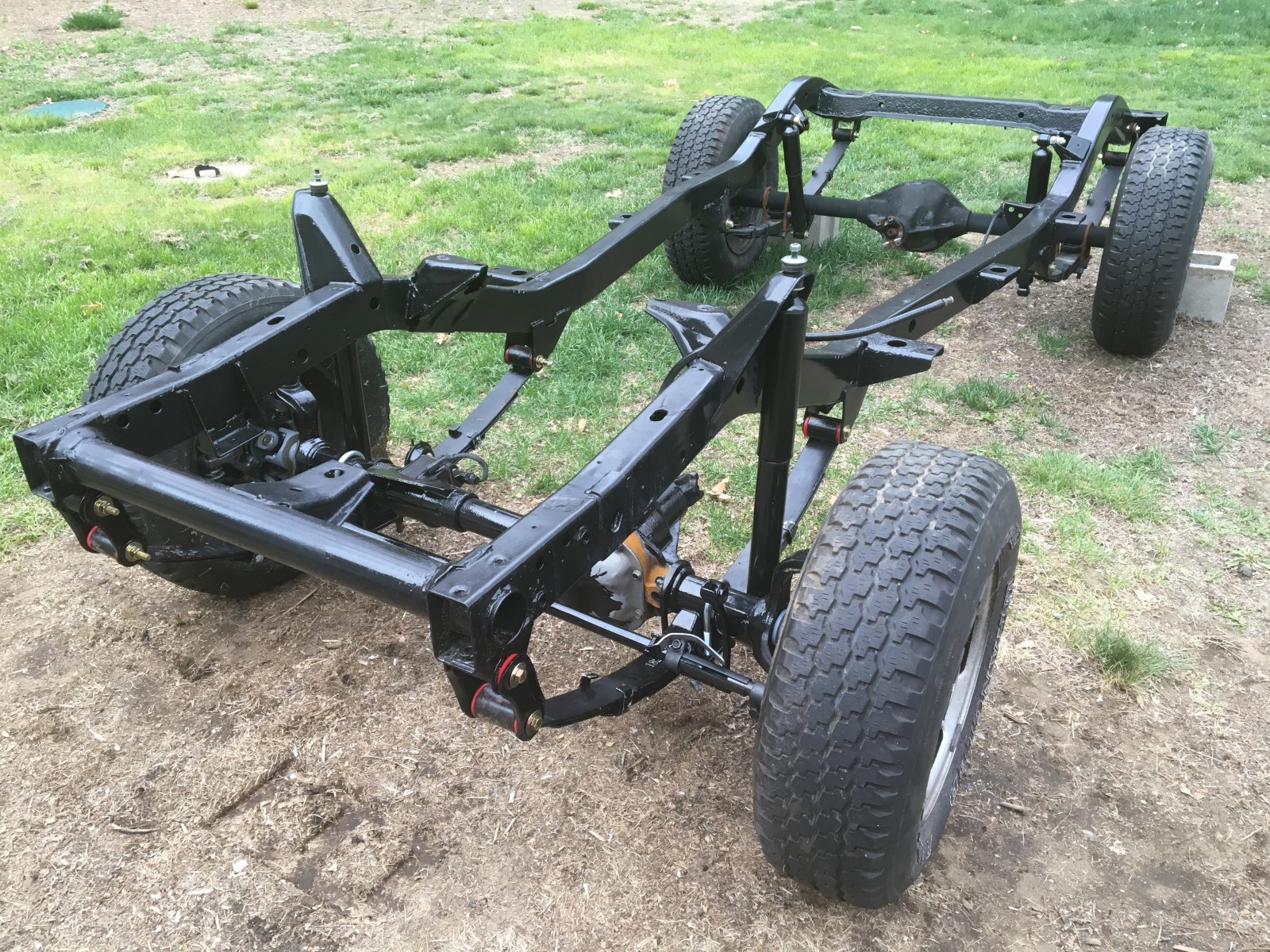
By Condition and Origin:
- Used/Salvaged Frames: These are the most common and often the most affordable option. They come from wrecked vehicles or donor Jeeps. Their condition can vary wildly, from minor surface rust to significant damage.
- Refurbished/Blasted Frames: Some sellers offer used frames that have been sandblasted to remove rust and then primed or painted. While visually appealing, it’s crucial to verify the integrity underneath the new coating.
- New Aftermarket Frames: Several specialized companies (e.g., Throttle Down Kustoms, Apex Chassis) manufacture brand-new, heavy-duty frames for older Wrangler models (primarily YJ, TJ, LJ). These are often stronger than OEM, made from thicker steel, and designed for specific custom applications (e.g., stretched, lifted). They come at a premium price but offer peace of mind and superior quality.
Key Considerations When Purchasing a Frame
Buying a frame is a significant investment of time and money. Careful inspection and due diligence are paramount to avoid costly mistakes.
1. Rust and Corrosion: The Silent Killer
This is the number one enemy of a Wrangler frame. Inspect thoroughly, even if the seller claims it’s "rust-free."
- Common Rust Spots: Pay close attention to the rear sections near the control arm mounts, skid plate mounts, body mounts, spring perches, and around the transmission crossmember.
- Inspection Techniques:
- Visual: Look for bubbling paint, flaking metal, and holes.
- Tap Test: Use a small hammer or screwdriver to gently tap suspicious areas. A solid "thunk" is good; a dull "thud" or a piercing sound indicates thin, rusted metal.
- Probe: Carefully probe with a screwdriver in areas where rust is visible. If it goes through easily, walk away.
- Inside Rails: Inspect the inside of the frame rails, especially at drain holes, where debris and moisture can collect.
2. Accident Damage and Straightness
A bent or twisted frame is useless and dangerous.
- Visual Inspection: Look for kinks, bends, ripples, or cracks, especially around the front and rear crossmembers, suspension mounting points, and where the frame rails transition.
- Symmetry: Measure diagonally from fixed points on the frame (e.g., from one front body mount to the opposite rear body mount) to check for symmetry. Inconsistent measurements indicate a bent frame.
- Professional Assessment: If possible, have a frame shop inspect it using laser alignment equipment. This is the only definitive way to confirm straightness.
3. VIN Matching and Legalities
This is perhaps the most critical and often overlooked aspect.
- Frame VIN: Many Jeep frames have a VIN stamped on them (often on the passenger side frame rail near the front wheel well).
- Title Matching: If you are replacing a frame, the VIN on the new frame may not match your vehicle’s existing body VIN. This can create significant legal and registration hurdles.
- Bill of Sale: Always get a detailed Bill of Sale from the seller, noting the frame’s VIN (if present), the seller’s information, and the purchase date/price.
- State Laws: Research your local Department of Motor Vehicles (DMV) laws regarding frame swaps. Some states allow a frame swap without changing the vehicle’s identity (as the body VIN is usually primary), while others may require an inspection, re-titling, or even a "reconstructed" title designation. An aftermarket frame will not have a VIN, requiring specific procedures to register.
4. Shipping and Logistics
Frames are large, heavy, and awkward to transport.
- Freight Shipping: This is typically required for long distances. Obtain shipping quotes before purchase, as costs can range from hundreds to thousands of dollars depending on distance and freight class.
- Local Pickup: If possible, arrange local pickup to save on shipping costs. You’ll need a large truck or trailer.
- Loading/Unloading: Be prepared for the logistics of moving a heavy, bulky item. You’ll likely need multiple people or specialized equipment (forklift).
5. Budget Beyond the Frame
The cost of the frame itself is just one part of the equation.
- Shipping Costs: As mentioned, these can be substantial.
- Repair/Refurbishment: Factor in costs for sandblasting, painting, or welding repairs if the frame isn’t perfect.
- New Hardware: You’ll likely need new body mounts, bolts, and various brackets.
- Labor: If you’re not doing the swap yourself, shop around for qualified mechanics specializing in frame work.
- Hidden Costs: Be prepared for unexpected issues that arise during the swap.
Where to Find Jeep Wrangler Frames for Sale
Finding the right frame requires persistence and knowing where to look.
- Online Marketplaces:
- eBay: Good for a wide selection, but shipping can be complex.
- Craigslist/Facebook Marketplace: Excellent for local finds, allowing for in-person inspection and avoiding shipping costs. Search broadly in surrounding areas.
- Dedicated Jeep Forums (e.g., JeepForum.com, JLWranglerForums.com): Members often sell parts, and you can leverage the community for advice.
- Salvage Yards/Auto Recyclers: These are prime sources for used frames. They often have an inventory of wrecked Wranglers. It’s best to visit in person to inspect.
- Specialized Jeep Part Dealers: Some companies specialize in used Jeep parts and may have cleaned or refurbished frames in stock.
- Aftermarket Frame Manufacturers: For new, heavy-duty frames, go directly to companies like Throttle Down Kustoms or Apex Chassis.
- Word of Mouth/Local Shops: Let local Jeep clubs, mechanics, and off-road shops know you’re looking.
The Process: How to Buy and Install a Jeep Wrangler Frame
A frame swap is a major undertaking, best suited for experienced DIYers or professionals.
1. Pre-Purchase Due Diligence:
- Research: Understand the specific frame requirements for your Wrangler model.
- Communication: Ask the seller detailed questions and request high-resolution photos/videos.
- Inspection: As detailed above, be meticulous.
2. Disassembly of the Donor/Recipient Vehicle:
- Document Everything: Take photos and videos of every step. Label all wires, hoses, and bolts.
- Body Removal: This is the most significant step. The body needs to be carefully separated from the old frame, requiring removal of all body mounts, steering column, wiring harnesses, brake lines, fuel lines, and any other connections. A lift or multiple strong individuals are essential.
- Drivetrain & Suspension Removal: The engine, transmission, transfer case, axles, and suspension components must be detached from the old frame.
3. Preparation of the New Frame:
- Clean and Inspect: Even a "good" frame needs cleaning. Remove any debris, old rust, or undercoating.
- Repairs/Reinforcement (if needed): Address any minor rust spots or weak points. Consider adding aftermarket frame reinforcement kits if you plan heavy off-road use.
- Paint/Coat: Apply a protective coating (e.g., POR-15, epoxy primer, chassis paint) to prevent future rust.
4. Assembly on the New Frame:
- Component Transfer: Reattach the suspension components, axles, engine, transmission, and transfer case to the new frame. Ensure all bolts are torqued to factory specifications.
- Body Remounting: Carefully lower the body onto the new frame, aligning all body mounts. Reconnect all wiring, lines, and controls.
- Final Connections: Reconnect drive shafts, exhaust, and all other systems.
5. Post-Installation:
- Fluids: Refill all fluids (engine oil, transmission fluid, coolant, brake fluid).
- Alignment: A professional alignment is crucial after a frame swap to ensure proper handling and tire wear.
- Safety Checks: Double-check every connection, bolt, and line. Test all lights, brakes, and steering.
- Legal Updates: If required by your state, update your vehicle’s registration or title to reflect the frame swap.
Tips for a Successful Frame Purchase and Swap
- Patience is Key: Finding the perfect frame at the right price takes time. Don’t rush.
- Always Over-Inspect: Assume nothing. Even a few hundred dollars for a professional inspection can save you thousands later.
- Document Everything: Keep records of all communications, inspections, bills of sale, and any VIN information.
- Factor in "While You’re In There" Costs: A frame swap is the perfect time to replace worn-out suspension components, brake lines, fuel lines, or even upgrade axles.
- Safety First: Use proper lifting equipment, jack stands, and personal protective equipment. Never work under a vehicle supported only by a jack.
- Consider Professional Help: If you lack the tools, space, or expertise, don’t hesitate to outsource portions of the job to a reputable shop.
Jeep Wrangler Frame For Sale: Estimated Price Table
Prices for Jeep Wrangler frames vary significantly based on generation, condition, and whether they are new aftermarket or used OEM. The table below provides general estimated ranges.
| Frame Type/Generation | Condition Category | Estimated Price Range (USD) | Key Considerations |
|---|---|---|---|
| Jeep YJ (1987-1995) | Used (Fair to Good) | $500 – $1,500 | Prone to rust, check thoroughly. Leaf spring mounts are common rust spots. |
| New Aftermarket (TDK) | $3,000 – $4,500+ | Stronger than OEM, no rust issues. Ideal for complete restorations or custom builds. | |
| Jeep TJ (1997-2006) | Used (Fair to Good) | $800 – $2,500 | Very popular, check rear control arm mounts, skid plate mounts. |
| New Aftermarket (TDK) | $3,500 – $5,000+ | Excellent for resto-mods, often come with added strength or specific features. | |
| Jeep LJ (2004-2006) | Used (Fair to Good) | $1,500 – $3,500 | Highly sought after due to longer wheelbase. Expect higher prices due to demand. |
| New Aftermarket (TDK) | $4,000 – $6,000+ | Premium option for the desirable LJ platform. | |
| Jeep JK (2007-2018) | Used (Good to Excellent) | $2,000 – $5,000+ | More complex, less prone to rust than older models but still check for accident damage. Often from salvage vehicles. |
| New OEM (Dealer) | $6,000 – $10,000+ | Rare to find new OEM frames; usually special order. Extremely expensive. | |
| Jeep JL (2018-Present) | Used (Good to Excellent) | $3,000 – $7,000+ | Newest generation, often from low-mileage wrecks. Expect higher prices. |
| New OEM (Dealer) | $8,000 – $15,000+ | Very expensive, typically only viable for insurance write-offs or high-value restorations. | |
| Rolling Chassis | Used (Varies) | $2,000 – $10,000+ | Frame with axles, suspension, sometimes engine/trans. Price depends heavily on included components and condition. |
Note: These are estimates. Actual prices can vary widely based on location, seller, market demand, and exact condition. Shipping costs are extra and can be significant.
Frequently Asked Questions (FAQ) About Jeep Wrangler Frames
Q1: Is it legal to swap a Jeep Wrangler frame?
A1: Yes, it is generally legal, but the process varies by state. Most states consider the VIN on the body (or the primary VIN registered with the vehicle) as the identifying marker. However, if the frame has a different VIN, or if you’re using a new aftermarket frame without a VIN, you may need to go through an inspection, apply for a "reconstructed" title, or get a new VIN assigned by your state’s DMV. Always check your local DMV regulations.
Q2: How can I tell if a frame has rust issues that are too severe?
A2: Look for flaking, delaminated metal, or holes larger than a dime. Use a hammer to tap around suspicious areas; if it sounds dull or soft, or if the hammer goes through, the rust is structural and severe. Pay close attention to body mounts, control arm mounts, and skid plate areas.
Q3: Do all Jeep Wrangler frames have VINs stamped on them?
A3: Most OEM Jeep Wrangler frames do have a VIN stamped on the passenger side frame rail, usually near the front wheel well or control arm mount. Aftermarket frames typically do not have a VIN.
Q4: What’s the difference between a bare frame and a rolling chassis?
A4: A bare frame is just the metal structure itself, without any components attached. A rolling chassis includes the frame, axles, suspension components (springs, shocks, control arms), and sometimes the steering linkage and brake lines. It allows the frame to be "rolled" around on its own wheels.
Q5: How much does it cost to ship a Jeep Wrangler frame?
A5: Shipping costs vary significantly based on distance, carrier, and whether it’s residential or commercial delivery. Expect to pay anywhere from $300 to $1,500+ for freight shipping across the country. Local pickup is always the cheapest option.
Q6: Can I perform a frame swap myself?
A6: A frame swap is a major undertaking that requires significant mechanical skill, specialized tools (like an engine hoist or body lift), ample space, and often extra hands. It’s not a beginner-level DIY project. If you’re not confident, it’s best to hire a professional.
Q7: Should I buy a new aftermarket frame or a used OEM frame?
A7:
- New Aftermarket: Ideal for complete restorations, custom builds, or if you want superior strength and zero rust. More expensive.
- Used OEM: More budget-friendly, good for replacing a moderately damaged or rusted frame on a daily driver or less intensive project. Requires careful inspection for rust and damage.
Conclusion
The Jeep Wrangler frame is the backbone of its legendary capability and timeless appeal. Whether you’re battling the relentless march of rust, recovering from an unfortunate accident, or embarking on an ambitious custom build, the availability of "Jeep Wrangler Frame For Sale" offers a vital pathway to rejuvenating or reinventing your rig. While the process of purchasing and swapping a frame is a significant undertaking, demanding meticulous research, careful inspection, and substantial mechanical effort, the rewards are immense. A clean, straight, and solid frame ensures the safety, longevity, and performance that every Jeep enthusiast cherishes, allowing your Wrangler to continue conquering trails and turning heads for years to come.
